INVASIVE SPECIES THREATS TO SPIDER CHAIN OF LAKES
EURASIAN WATER MILFOIL (EWM) - not yet detectedEurasion Water Milfoil (EWM) has not yet been detected in the Spider Chain of Lakes, although most of the surrounding lakes are battling this dangerous weed, with costly measures and imperfect outcomes. EWM is one of the most devastating aquatic plants and is transmitted by hitching a ride on boats and trailers from an infected lake. EWM forms large, dense floating mats that prevent boat traffic, block sunlight which kills native aquatic plants and prevents larger fish from growing. It often leads to poor water quality and algae blooms giving the lake a “dead” look. We need to be vigilant about keeping this plant out of our lake, because there is no known method to eradicate it. Cleaning boats, waders, boots and jet skis BEFORE putting them in Spider Lake is what we ask of you and your guests. Help us keep Spider Lake free of EWM: If you spot a suspicious plant, call the SCLA Communication Coordinator listed the SCLA Rapid Response Plan below. HYBRID WATER MILFOIL (HWM) - not yet detectedHybrid Water Milfoil (HWM) is a very problematic combination of Eurasion Water Milfoil (EWM) and Northern Water Milfoil (a native, non-threatening plant). It is present in multiple neighboring lakes and is very difficult to control. This hybrid grows to extreme densities similar to EWM, is extremely fast growing and a major management concern. To confound matters, hybrid watermilfoil often does not respond to treatment strategies that effectively control Eurasion Water Milfoil. HWM resembles EWM in appearance but the only true determination is through scientific testing. Hybrid Water Milfoil is growing rapidly in Lost Land Lake and Lake Namekagon. If you spot a suspicious plant call the SCLA Communication Coordinator listed on the SCLA Rapid Response Plan below YELLOW FLAG IRIS (YFI) - present Yellow Flag Iris (YFI) is present on the Spider Chain of Lakes. It is a fast-growing and fast-spreading poisonous land based invasive primarily found on shoreline. YFI can outcompete other wetland plants, forming almost impenetrable thickets in much the same way that cat-tails do. Small clumps can be dug out, though this is only effective if the rhizomes are entirely removed. Mowed plants will regenerate from the rhizomes, so plants must be cut multiple times to exhaust their energy reserves. The sap may cause skin irritation, so gloves should be worn when handling cut or otherwise damaged stems.  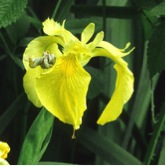
Yellow Iris can be controlled by glyphosate-based herbicides. Plants growing near standing water should be treated with an herbicide approved for aquatic use to minimize harm to amphibians. No effective biological control agent is known at this time. WHAT YOU CAN DO TO Help Eradicate YFI:
Tell us your property location, and site of Yellow Flag Iris on your property. We will ask volunteers to check your property and remove plants from your shoreline. CURLY-LEAF PONDWEED - present Curly-Leaf Pondweed has been identified in many areas of Big Spider Lake. It also is transmitted by boats and trailers that drag weeds from an infected lake. This species forms dense mats that can prevent boating, swimming, and fishing and displaces native plants needed for the food chain on our lake. In July, the plants die back and pile on the shoreline causing an increase in phosphorus and undesirable algal blooms. BANDED & CHINESE MYSTERY SNAILS - present Banded & Chinese Mystery Snails are present in the Spider Chain of Lakes. There are no treatment options for these invasives. The negative effects are that a large scale die-off can create a foul odor. The sharpness of the shells on your shoreline can be a problem for bare feet. They become a nuisance attaching to docks, lifts and boats. Use caution when removing!
Banded Mystery Snails are 1 to 1.5 inches tall with brown bands. Chinese Mystery Snails can be up to 3 inches. Photo: Left side of photo is invasive Banded Mystery Snail, 1-1.5 inches tall; horizontal brown bands on shell. The invasive "Chinese Mystery Snail" is shown right. Use caution when removing, as the shells are sharp. NARROW LEAF CATTAIL A large infestation of the Narrow-leaf Cattail was discovered in 2023 by an SCLA Lake Monitor. (for photo see p. 27 of the Wisc. Aquatic Invasive Species Early Detector handbook) While this cattail looks like native cattail, it grows aggressively and can take over a shoreline. If you see this plant please report it. The AISWQ Committee will be developing a remediation program in 2025 for this invasive species. Matt Berg, lake biologist, who does regular plant surveys on the Spider Chain of Lakes will identify additional sites in his reports.
Photo: Narrow Leaf Cattail on East Bay of Big Spider BLUE-GREEN ALGAE - seasonally present (information provided by Gina LaLiberte, Water Resources Management Specialist, WI DNR)Blue-green algae grow in every lake in Wisconsin. Clumps of blue-green algae that normally grow on the lake bottom have been floating to the surface of lakes in the Spider Chain. The good thing about these clumps is that they are easily noticed and therefore can be avoided, unlike other blue-green algae that grow as microscopic particles dispersed throughout lake water. These latter kinds of blue-green algae, which grow to nuisance levels known as blooms that discolor water and form floating scums, are not what are growing in the Spider Chain. However, the same precautions that keep people safe from blue-green algae blooms would also apply to these clumps of blue-green algae. Some blue-green algae can potentially make toxins that can make people and animals sick if they swallow lake water containing blue-green algae or if they inhale blue-green algae in water droplets, as might happen if they water ski through a heavy accumulation of blue-green algae. Some people may be susceptible to rashes and other irritation from skin contact with blue-green algae, such as if it is rubbed against the skin under clothing. The floating clumps of blue-green algae in the Spider Chain are easily seen because of the bright blue-green color, and thus it's easy for people to avoid swimming in areas with high densities of the clumps and avoid accidentally swallowing them. Dogs won't necessarily avoid the clumps of blue-green algae, so it is important for pet owners to prevent their dogs from ingesting the clumps via drinking the lake water, eating any material that may be washed up on shore, or licking it from their fur after swimming.
You cannot tell if accumulations blue-green algae are producing toxins just by looking at them, so be wary of any high concentration of blue-green algae in water, whether it is dense accumulations of microscopic particles that discolor the water or areas with high concentrations of floating clumps of blue-green algae. Even if water is clear, it’s always a good idea to avoid swallowing any untreated surface water because it can contain blue-green algae, bacteria, viruses, or parasites that can make people and animals sick. Blue-green algae are easily moved around by wind and currents. The location and density of these blue-green algae clumps in the Spider Chain will likely change daily until they eventually dissipate, so it is important for you to assess conditions for yourself before swimming or participating in other water recreation. If you use common-sense precautions, you can safely enjoy recreation on Wisconsin’s lakes and rivers:
It's important to choose the clearest water possible for dogs to swim in, and to keep dogs out of areas with algae accumulations or dense particulate matter that might be blue-green algae.
PURPLE LOOSESTRIFE - present Numerous strands of this very harmful aquatic plant exist on the shoreline of Clear Lake and Big Spider Lake. When purple loosestrife invades, it impacts the lake by forming thick stands that prevent recreation, displacing fish from the shelter where they reproduce and rear their young, and crowd out native aquatic plants and insects which upsets the entire ecosystem. PROJECT PIKE Northern Pike are invasive to the Spider Chain of Lakes. In an effort to remove them, the WDNR has increased the daily catch limit to 10. Please join us in removing these invasive fish who harm other species in the lake. For more information on Project Pike go to https://spiderlakepikeproject.com/home.php. SCLA RAPID RESPONSE PLAN - Post on Your Refrigerator! The SCLA Rapid Response Plan Works! SCLA is fortunate to have trained volunteer Lake Monitors, an active Aquatic Invasive Species and Water Quality Committee (also volunteers), and an involved Board of Directors (yes, they are volunteers too) who are committed to preserving and protecting the Spider Chain of Lakes from Aquatic Invasive Species. Please report suspect samples to SpiderChainOfLakes@gmail.com ATTN: AIS & Water Quality Committee or Sawyer County AIS Coordinator, Natalie Erler (715-634-6463). To download the SCLA Rapid Response Plan click on the image below. | RESOURCESWisc. Aquatic Invasives Early Detector HANDBOOK SCLA Rapid Response Plan for Discovery of Invasives: Detailed Version:
EWM v. Northern Milfoil (pdf):
Detailed Image of Eurasion Millfoil
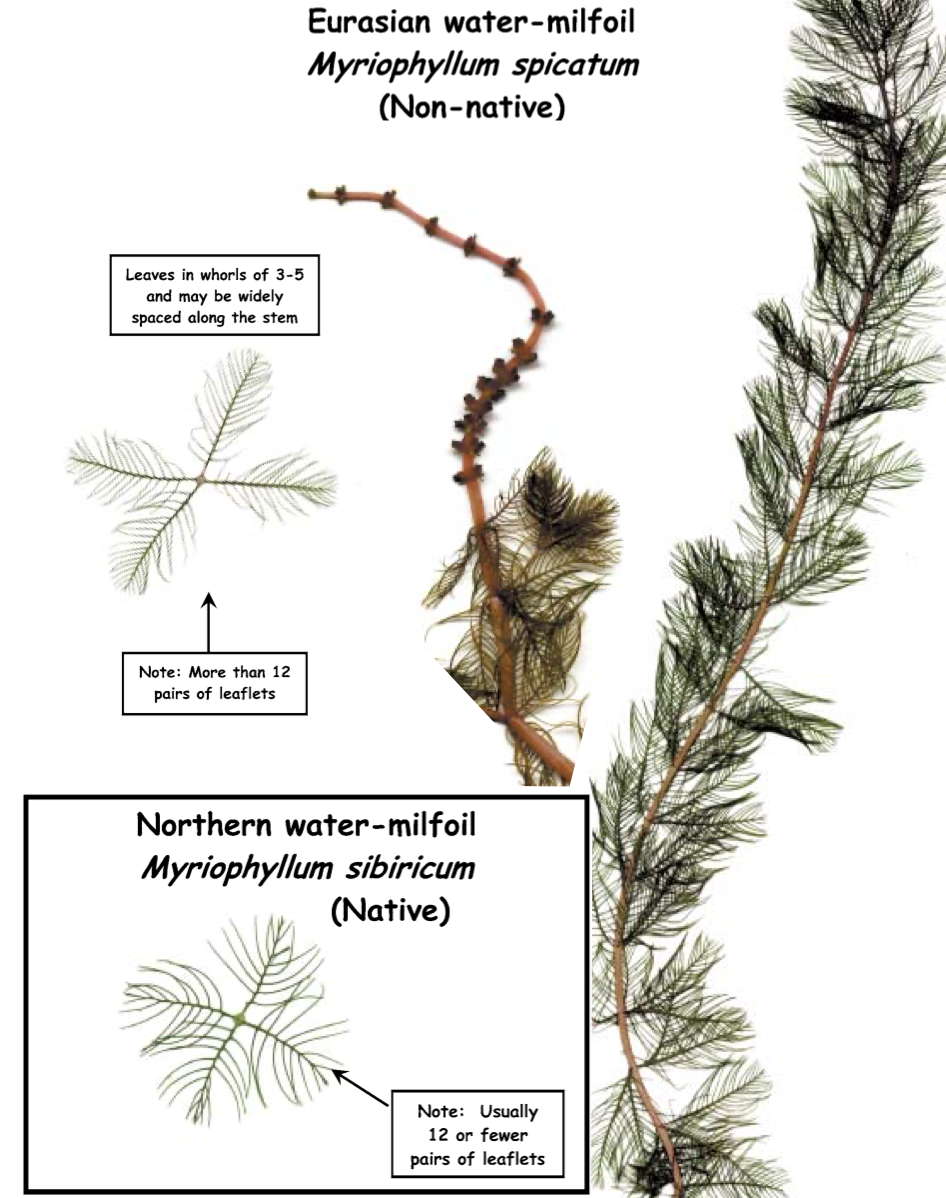
MORE ABOUT AQUATIC INVASIVE SPECIES (PDFs): Curly Leaf Pondweed - WI DNR Eurasion Milfoil - WI DNR Purple Loostrife - WI DNR Yellow Flag Iris - US Forest Service Fact Sheet Yellow Flag Iris - QUICK GUIDE (Sheet)
YFI LINKS:
Yellow Flag Iris - Wisconsin Wetlands Webpage (link) Yellow Flag Iris - Minnesota DNR Webpage (link)
Additional Reading on Invasives
“The High Cost of War,” by Jim Brakken of the Bayfield County Lakes Forum |

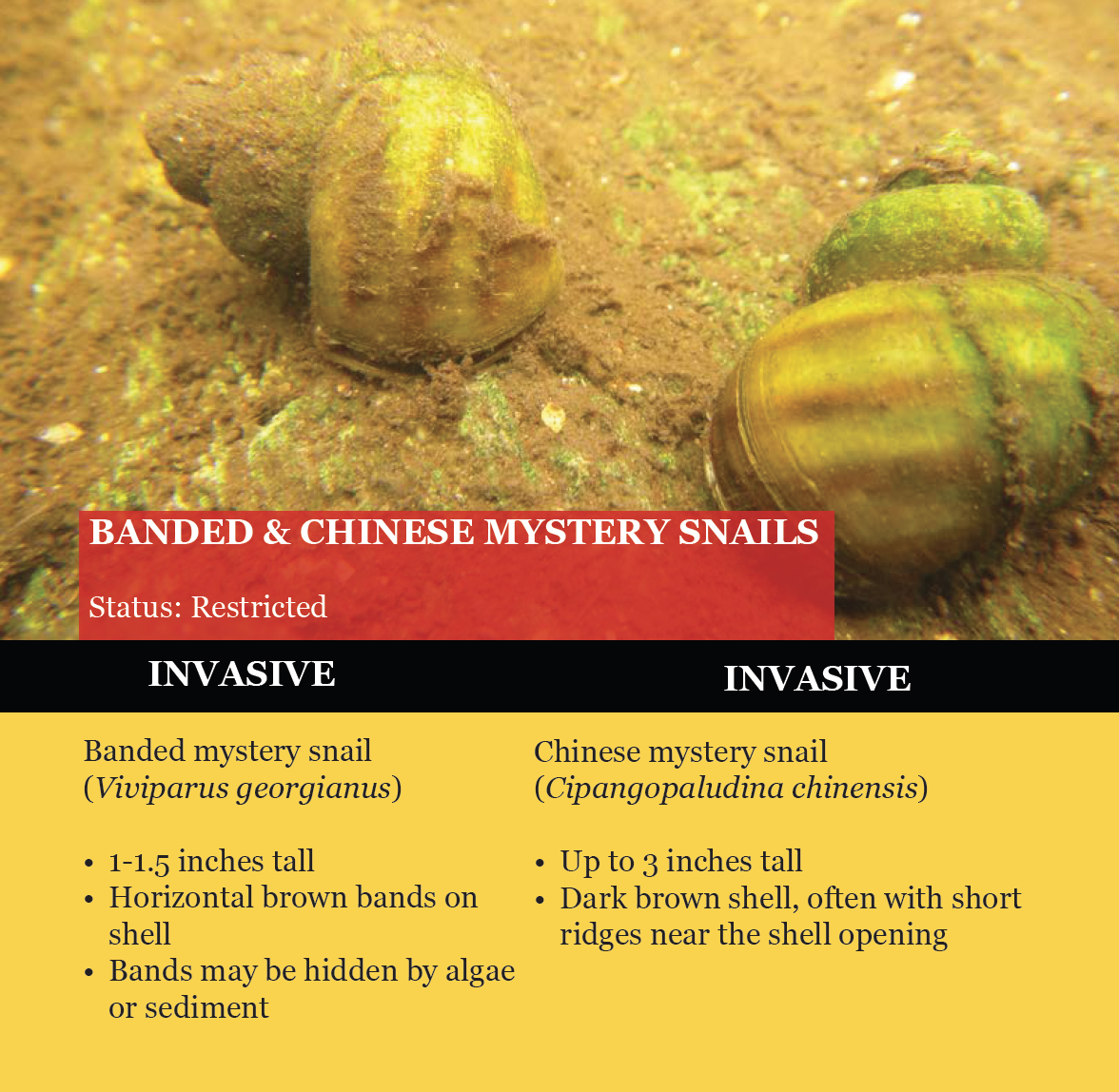
.jpg)
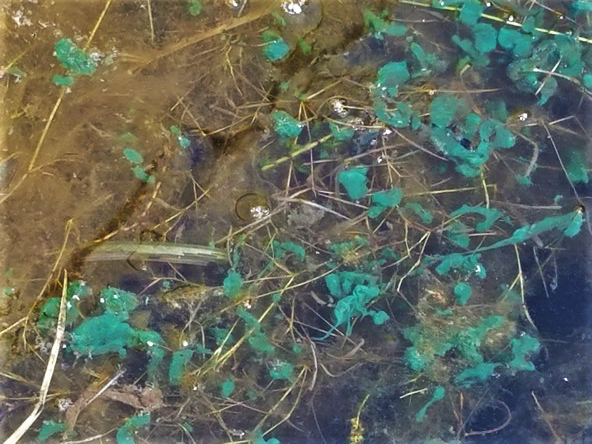
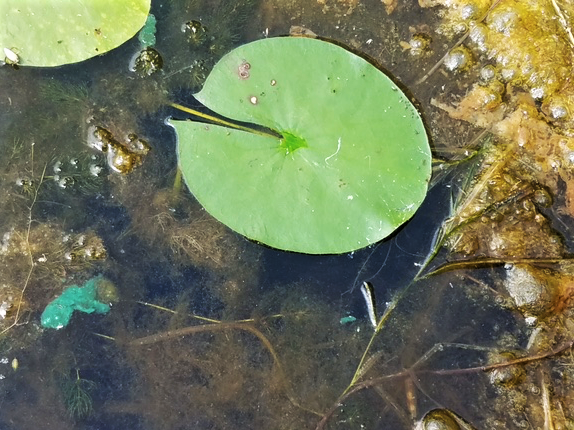
.jpeg) .
.